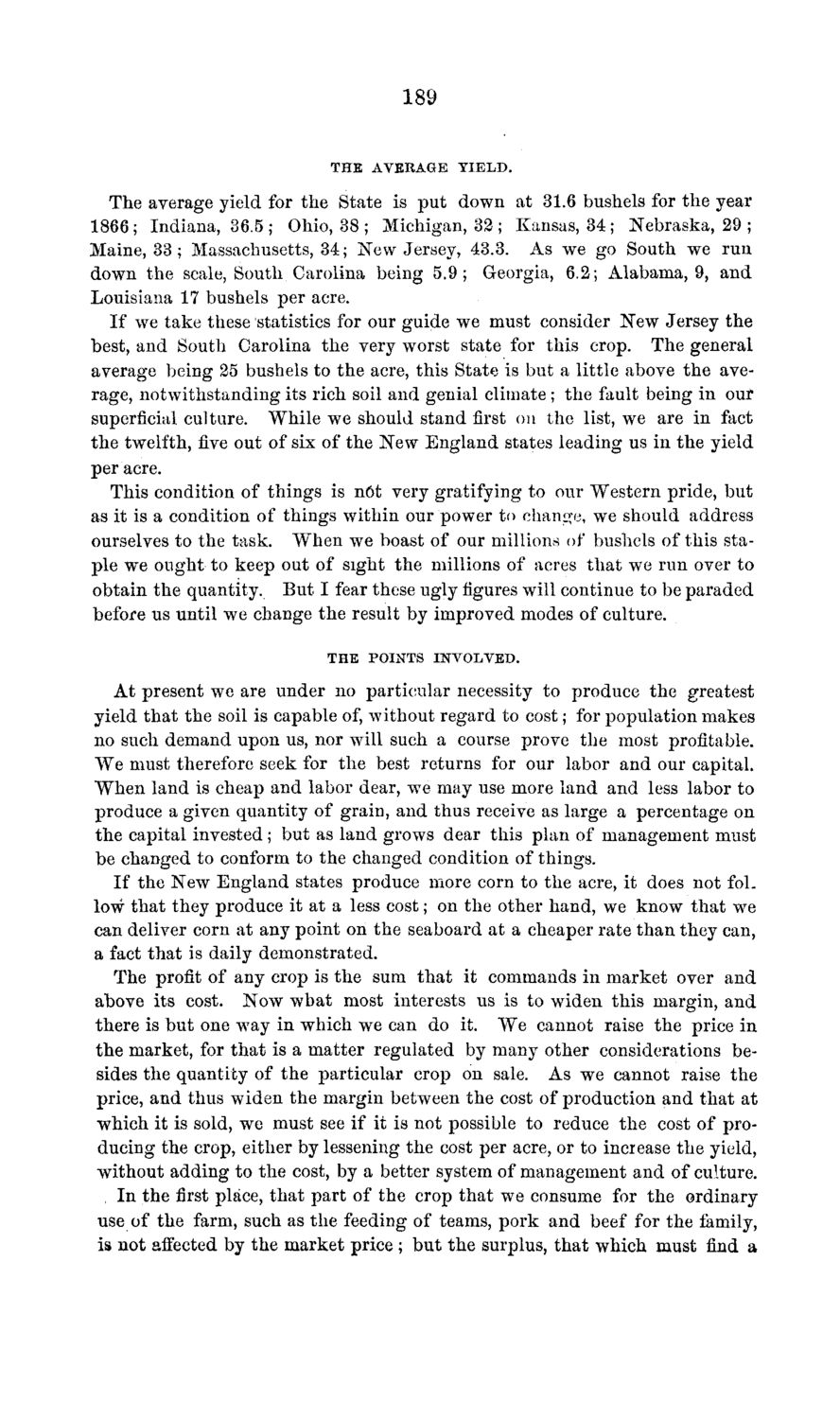| |
| |
Caption: Board of Trustees Minutes - 1869
This is a reduced-resolution page image for fast online browsing.

EXTRACTED TEXT FROM PAGE:
189 THE AVERAGE YIELD. The average yield for the State is put down at 31.6 bushels for the year 1866; Indiana, 36.5; Ohio, 38 ; Michigan, 32 ; Kansas, 34 ; Nebraska, 29 ; Maine, 3 3 ; Massachusetts, 34; New Jersey, 43.3. As we go South we run down the scale, South Carolina being 5.9; Georgia, 6.2; Alabama, 9, and Louisiana 17 bushels per acre. If we take these statistics for our guide we must consider New Jersey the best, and South Carolina the very worst state for this crop. The general average being 25 bushels to the acre, this State is but a little above the average, notwithstanding its rich soil and genial climate ; the fault being in our superficial culture. While we should stand first on the list, we are in fact the twelfth, five out of six of the New England states leading us in the yield per acre. This condition of things is n6t very gratifying to our Western pride, but as it is a condition of things within our power to change, we should address ourselves to the task. When we boast of our millions of bushels of this staple we ought to keep out of sight the millions of acres that we run over to obtain the quantity. But I fear these ugly figures will continue to be paraded before us until we change the result by improved modes of culture. T H E POINTS I N V O L V E D . At present we are under no particular necessity to produce the greatest yield that the soil is capable of, without regard to cost; for population makes no such demand upon us, nor will such a course prove the most profitable. We must therefore seek for the best returns for our labor and our capital. When land is cheap and labor dear, wTe may use more land and less labor to produce a given quantity of grain, and thus receive as large a percentage on the capital invested; but as land grows dear this plan of management must be changed to conform to the changed condition of things. If the New England states produce more corn to the acre, it does not follow that they produce it at a less cost; on the other hand, we know that we can deliver corn at any point on the seaboard at a cheaper rate than they can, a fact that is daily demonstrated. The profit of any crop is the sum that it commands in market over and above its cost. Now what most interests us is to widen this margin, and there is but one way in which we can do it. We cannot raise the price in the market, for that is a matter regulated by many other considerations besides the quantity of the particular crop on sale. As we cannot raise the price, and thus widen the margin between the cost of production and that at which it is sold, we must see if it is not possible to reduce the cost of producing the crop, either by lessening the cost per acre, or to increase the yield, without adding to the cost, by a better system of management and of culture. , I n the first place, that part of the crop that we consume for the ordinary use of the farm, such as the feeding of teams, pork and beef for the family, is not aifected by the market price ; b u t the surplus, that which must find a
| |